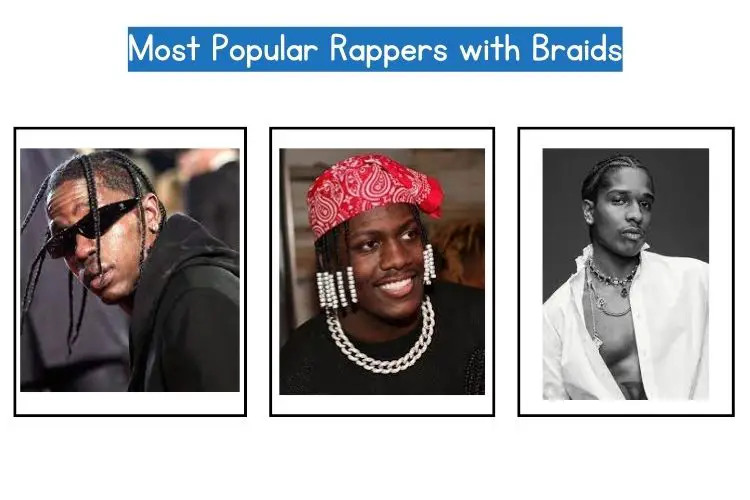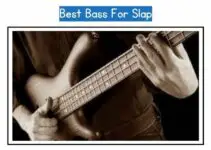The hip-hop culture is an embodiment of several components and facets coming together to create a unique culture that represents a set of people. Of all these components and facets, fashion remains an integral part of it.
Also, unarguably, although hip-hop synthesises several artistic, musical and cultural intricacies and nuances, it is still a fact that hip-hop (by virtue of its history and current practises) was birthed by black culture and still remains black culture.
As complex, vast, and dynamic as black culture is, historically, we can trace back the origin of braids to Africa and the black race.
Black American history also reminds us of how braids were frequently used by black slaves on the plantation to relay messages between themselves, plan, signal, and map out escape routes, and even used to keep gold and seeds to help them survive the tough life after they would run away from their masters.
That being said, it is very unsurprising (even necessary) that braids have found their way not just into hip-hop/rap but also into pop culture. As a way of identifying with their ancestral roots and history as a people, a lot of black and even white rappers have decided to stick with braids.
This is not an article on African or African-American fashion or a historical article on slavery, rather, this is a simple article that seeks to bring to you the 20 most popular rappers with braids.
If you are a fan of this hairstyle, regardless of the colour of your skin, it just makes sense that you know these rappers who also love what you love.
Even if you are not a fan of braids, it still makes sense that you know these rappers, the same way you know rappers with nose rings, without tattoos, with tattoos, etc. It doesn’t exactly have to hold any significance—-just know these rappers.
Table of Contents
20 Most Popular Rappers With Braids
Braids hold significant cultural and historical significance, not only among rappers but also in the world as a whole. Braiding hair is a practice that dates back thousands of years and is deeply rooted in various cultures and civilizations.
The origins of braids can be traced back to ancient times, with evidence of braided hairstyles found in different cultures worldwide. Apart from slaves using braids for various purposes, there have been several other speculations by historians.
In Africa, braids were used to indicate social status, and in Ancient Egypt, they were a symbol of wealth and power, often worn by Pharaohs in elaborate styles. These hairstyles have evolved over time and have been influenced by societal customs, fashion trends, and artistic expression.
In the context of rappers and hip-hop culture, braids have played a significant role in shaping individual style and self-expression. Rappers like Snoop Dogg, Lil Wayne, Kendrick Lamar, Travis Scott, and many others have embraced braided hairstyles as part of their image.
By wearing braids, these artists pay homage to their cultural heritage and showcase their personal style. Now let’s look at the complete list.
Snoop Dogg
Snoop Dog has sported various braided looks throughout his career, showcasing his versatility and personal style. His braids have become part of his signature image and contributed to his hair icon status.
Snoop Dogg’s braided hairstyles include box braids, cornrows, and even braided dreads. He has experimented with different lengths, sizes, and patterns, constantly evolving his look. His hairstyles have been admired and emulated by fans around the world.
Beyond his hairstyles, Snoop Dogg’s influence extends far beyond his hair. He is a rap legend with a career spanning over three decades. He has made significant contributions to the hip-hop genre and popular culture.
Kendrick Lamar
From the early stages of his career, Kendrick Lamar embraced the artistry of braids, incorporating them into his signature look. His braided hairstyles have undergone various styles and maintenance over the years.
The journey of Kendrick Lamar’s braids can be traced back to around 2014-2015, during his “To Pimp a Butterfly” tour. He can also be seen in braids on the cover art of his 2017 album “DAMN.”
The 17-time Grammy-winning rapper transitioned from a high-top fade to afro twists before putting his hair in protective styles like braids. His braided hairstyles have garnered attention from his fans, highlighting his creativity and personal style.
However, not limited to braids, Kendrick has also been seen sporting other hairstyles such as dreads, twists, cornrows, locs, and even shorter buzz cuts or fades. These different haircuts and styles reflect his ever-evolving persona and artistic expression.
Ludacris
During the late 1990s and early 2000s, Ludacris was one of the most recognizable rappers with braids, and his hairstyles became synonymous with his masculine and flamboyant persona.
His braided hairstyle, with his hair flying free and distinctive cornrows and sideburns, became easily recognizable, adding to his overall image as a talented artist.
His braids were often seen in his music videos and performances, further solidifying their association with his image and music.
Ludacris has occasionally shed his long braids in recent years and opted for shorter hairdos. He has been seen sporting a “shadow fade” hairstyle, which he described as a “spur of the moment kind of thing” and a complement to his new musical direction.
However, there have also been instances where Ludacris has returned to his signature braids, showcasing his timeless style and youthful appearance
ASAP Rocky
ASAP Rocky’s braids are often a combination of box braids and cornrows, with the braids styled in various patterns and designs. These braided hairstyles showcase his fashion-forward approach and have helped redefine the look of contemporary hip-hop artists.
The ASAP Rocky braids have become his signature hairstyle and have played a significant role in setting trends and popularizing braided hairstyles in mainstream culture.
There are various styles of ASAP Rocky braids, including classic six braids, neat curving braids, loose braids with a ponytail, braids with a bandana, and many more.
Some popular ASAP Rocky braid hairstyles include the ponytail with loose braids, classic six braids, neat curving braids, loose braids with a ponytail, and many more.
These hairstyles are known for their cool, calm, and elegant appearance, making them highly desirable among men who want to achieve a similar style.
ASAP Rocky’s braids are often seen in various contexts, including modelling gigs, red-carpet appearances, and performances.
They have become a prominent element of his overall fashion statement and have helped him create a unique and recognizable image in the hip-hop and fashion industries.
Xzibit
Xzibit, also known as Alvin Nathaniel Joiner, is just as well-known for his braids as his music. He gained recognition for his music and his appearance on the show “Pimp My Ride,” where you could see his braided hairstyle in various styles and music videos.
The Xzibit cornrows feature tightly braided rows at the scalp level, with ample scalp showing between each row. These rows are widely spaced, and at the lower edge of the hairline, the tiny braids continue but are free-swinging, ending about six to eight inches below the hairline.
Xzibit’s cornrows also have an angled arrangement, originating from a single point above the bridge of the nose and extending almost parallel to the hairline. The unique spacing and angle of the cornrows contribute to Xzibit’s distinct hairstyle.
Lil Wayne
Lil Wayne, known for his iconic songs like Mirror, No Love, Lollipop, A Milli, etc., is also known for his iconic dreadlocks, which have become a significant part of his style and image.
Dreads, similar to braids, are formed by intentionally matting or coiling sections of hair over time to create thick, rope-like strands.
Over the years, Lil Wayne’s dreads have gone through various stages and transformations. Starting in 2002 with semi-freeform dreads, Weezy’s hair has undergone various lengths, colours, and styles over the years, including short, medium, and long dreads and bleached and coloured variations.
His dreads have contributed to his unique and recognizable look and influenced a new generation of individuals who have embraced dreadlocks as a hairstyle, reflecting his cultural impact and dominance in the music industry.
Pusha T
Pusha T, born Terrence LeVarr Thornton, is a highly influential rapper, songwriter, and record executive from Virginia, USA. Pusha T rose to fame in the early 2000s as an integral part of the highly acclaimed hip-hop duo Clipse.
Alongside his brother No Malice, he captivated audiences with his raw and uncompromising lyricism, painting vivid pictures through his storytelling abilities.
In addition to his lyrical prowess, Pusha T is recognized for his distinct sense of style. He is known for his impeccable fashion choices, frequently sporting designer clothing and accessories.
Pusha is also known for his signature braided hairstyle. Pusha T’s braids have been seen in numerous music videos and public appearances.
He often opts for neatly executed cornrows, which involve tightly braiding the hair close to the scalp in straight lines or intricate patterns.
This hairstyle adds a stylish element to his overall appearance and serves as a cultural nod to African and African-American hair traditions.
Coolio
The man behind the trending and iconic “Gangsta Paradise,” Coolio, was also known for his iconic hairstyle that features braids.
In the 1990s, during his peak in hip-hop, the late rapper was often seen with a head full of braids styled upright, which became his trademark look. These braids added to his unique persona and helped him stand out.
However, as time passed, Coolio’s hairstyle evolved, and he opted for a different approach. Coolio eventually embraced his balding pattern, with thinning hair at the crown of his head, and kept his hair in a shorter, more minimalistic style.
While his last hairstyle was different from his iconic braided look, Coolio’s braids from the ’90s remain an important part of his style legacy and contribute to his enduring image in music and pop culture.
Meek Mill
Meek Mill, also known as Robert Rihmeek Williams, is an American rapper known for his distinctive style and impactful music. Musically, he is known for his aggressive and energetic rap style. He often delivers his lyrics with a powerful and passionate delivery.
Meek Mill is known for his distinctive style and has undergone various hairstyle changes throughout his career. In the past, Meek Mill has been known to wear braided hairstyles.
There are references to his braided days, indicating that he had braids at some point in his career. However, Meek Mill cut off his hair in 2011 and has been seen with a clean-shaven look since then.
Lastly, the rapper only recently posted a picture with the same hairstyle on Instagram.
Lil Yachty
Red braids have been a constant companion in Lil Yachty’s journey. Before becoming a rapper, he used to dye his hair red. This red colour has been his signature hairstyle, and he hasn’t been seen with any other hair colour for a long time.
Lil Yachty has often adorned his braids with colourful beads, particularly red beads. This style adds an extra touch of uniqueness and visual appeal to his braided hairstyles.
In addition to his iconic red braids, Lil Yachty has also experimented with black braided hairstyles. These styles often combine red and black braids, creating a visually striking look.
Additionally, the rapper combines his braids with a bandana and has been spotted with French braids, giving Yachty a clean and sophisticated appearance.
The Atlanta rapper has showcased diverse braided hairstyles, including braided pigtails that add a playful and youthful vibe to his look. He has also experimented with tying beads on the sides of his braids, adding a touch of creativity and personal flair.
On occasion, Lil Yachty has opted for a relaxed and casual hairstyle by tying his braids into a loose top knot, allowing for versatility and different styling options.
Furthermore, he has embraced colourful beads, incorporating beads of various colours into his braided hairstyles to make them even more eye-catching. Lastly, you can find many online tutorials if you want to style your hair like Yachty.
Travis Scott
Travis Scott, the popular rapper known for his unique style and music, has become well-known for his signature braided hairstyles. He often rocks box braids, characterized by square-shaped partitions that create “boxes” on the head and fall into braids.
The 32-year-old rapper’s braids have inspired both men and women to embrace this style. He has been seen sporting short box braids that fall by the ear, providing a comfortable and trendy look.
Additionally, Travis has experimented with very long box braids. Besides box braids, Travis Scott has also been spotted wearing his braids with tied beads on the sides, adding a touch of creativity and personal flair.
He has sometimes tied his braids into a loose top knot, offering a relaxed and versatile hairstyle. Scott has also incorporated multi-coloured beads into his braided hairstyles, making them more visually appealing.
These various braided hairstyles worn by Travis Scott demonstrate his distinctive aesthetic and influence on hair trends
Ol’ Dirty Bastard
Ol’ Dirty Bastard, also known as ODB (born Russell Tyrone Jones), was an American rapper and founding member of the Wu-Tang Clan. He often sported various hairstyles, including braids and locks, and his overall fashion sense was unconventional and bold.
Ol’ Dirty Bastard’s impact on the rap scene and his distinctive persona continue influencing and inspiring artists and fans. When it comes to his hair, ODB revolutionized the hairstyle game in the 1990s, turning his braided look into an iconic classic.
His braids were not just ordinary; they started from the forehead and emerged from the back of the neck, creating a unique and striking effect where they spiked up at the crown. This distinct hairstyle became synonymous with ODB’s Brooklyn Zoo style, representing his bold and fearless persona.
Bow Wow
Bow Wow, an American rapper and actor, has experimented with various hairstyles. One notable hairstyle associated with Bow Wow is his signature fade haircut.
The fade haircut is characterized by short hair on the sides and back that gradually blends into longer hair on the top. However, the artist was also known for his braided hair.
His hairstyle combines elements of the traditional braided hairstyle with a fun and playful twist. It involves braiding the hair in small sections close to the scalp to create a neat and intricate pattern.
Bow Wow was popular for styling his braids with beads. His strands lay long on his shoulders, and he has had episodes of cornrow braids and box braids, which inspired teenagers to keep this hairstyle.
Post Malone
It’s less common and often controversial for white rappers to carry braids due to their historical significance. It’s also considered offensive and politically incorrect amongst a few online groups. However, Post Malone often sported two big braids, which became his signature look.
In an interview, he mentioned that the inspiration for his cornrows came from the basketball Hall of Famer Allen Iverson, known for his iconic braided hairstyle.
Post Malone’s braids were a significant part of his overall aesthetic, complementing his facial tattoos and unique image. The braids became synonymous with his early music career and contributed to his recognizable style.
Suppose you want to achieve a similar hairstyle to Post Malone’s braids. In that case, you can find tutorials and guides online that provide step-by-step instructions on creating braided hairstyles.
Wiz Khalifa
Throughout his career, Wiz Khalifa has been known to sport braided hairstyles. However, it’s worth noting that his hairstyles have varied over time, and he has experimented with different looks, including dreadlocks and short haircuts.
The “Black & Yellow” singer’s braided hairstyles have ranged from two big braids to smaller, more intricate braided patterns. The earlier pictures of Wiz Khalifa showcased a standard African American male rap artist hairstyle.
However, as he gained fame and fortune, he started growing out his hair and incorporated a signature honey blonde dye strip in the front, similar to rapper Kwame from the late 80s and early 90s. This unique touch added to his distinct appearance and style.
Wiz Khalifa’s hairstyles have continued to evolve throughout his career. In addition to braids, he has also sported other hairdos, such as dreadlocks and short haircuts, and even dyed his hair purple.
Lil Pump
Lil Pump’s hairstyles have been diverse, including short dreadlocks, shaved heads with dreads propped up into two buns, and colourful dreads. He has also been known for using bleach and dye, incorporating vibrant colours into his hair.
He has intentionally branded himself as a rapper known for constantly changing the colour of his locks, incorporating vibrant shades like green, pink, orange, and blue, among others. Lil Pump’s dreads are often distinguishable due to his use of multi-colour bleach and dye, setting him apart in the hip-hop community.
J. Cole
J. Cole is a renowned rapper for his distinctive hairstyles, including braids and dreads. While J. Cole is more commonly associated with dreads, he has also been seen sporting braided hairstyles.
However, it’s worth noting that J. Cole’s braided hairstyles might not be as prominent or frequently observed as his dreads.
Regarding dreads, his journey began back in late 2014 or early 2015. He started with a thick afro and twisted sections of his hair to create the foundation for his dreads.
As time passed, his dreads grew longer and now passed his shoulders, symbolizing freedom from oppression and self-love. Now they have become a significant part of his image and brand.
Cochise
Cochise, also known as Yung Cochise, gained attention in the music industry and achieved viral success with his songs, particularly “Hatchback” and “Red Head.” Cochise’s popularity surged through platforms like TikTok and YouTube, leading to a record deal with Columbia Records in 2020.
However, his unique hairstyle has become his signature look, as he often sports intricate braids that add to his overall image as an artist. Rapper or box braids have been a popular hairstyle among many hip-hop artists for decades, including Cochise.
Pop Smoke
The late legendary Drill King Pop Smoke also used to carry braids that featured a straight middle parting and four jumbo feed-in braids with zig-zag parts on each side of the head. This style creates a clean and minimalistic look called “Pop Smoke braid style.”
While the basic Pop Smoke braid style has four feed-in braids, there are numerous variations and ways to customize this hairstyle. You can also experiment with different partings, lengths, colours, and accessories to create a unique look that suits your personality and preferences.
There is also a trendy variation known as three-layer Pop Smoke braids, which add volume and can be achieved by incorporating multiple layers of braids. Pop Smoke’s braids can last around four to six weeks or longer, depending on the individual’s hair texture and maintenance routine.
Pop Smoke’s braids gained popularity and have become a trendy hairstyle. They can be adorned with accessories like beads, cuffs, or rings and are suitable for kids, boys, girls, men, and women.
Dave East
Dave East has experimented with various hairstyles throughout his career but has settled on braids as his signature look.
He is known for his cornrowed style, where his medium-length hair is parted down the middle and cornrowed horizontally down both sides, with the braids hanging straight down in shoulder-grazing plaits.
Dave East’s braids offer versatility, and his look inspires several popular styles. These styles include cornrow braids, short braided buns, zigzag braids, box braids, Bob Marley braids, rope-like braids, and pulled-back braids.
Cultural Context and Significance of Braids – What it Means for Black People?
Braids hold immense cultural significance for Black people, encompassing a rich history and a powerful symbol of identity, heritage, and self-expression.
Braiding practices date back thousands of years in African culture, with ancient stone paintings depicting women with braids and suggesting their origins among tribes like the Himba people in Namibia.
Braids have been deeply woven into African traditions, customs, and societal structures, serving as a means of self-expression and a medium to convey social status, age, marital status, tribal affiliation, and more.
Braids play a vital role in cultural identity within the Black community, fostering social bonds within families and communities and preserving ancestral traditions.
Braiding has served as a communal practice, bringing people together and carrying forward cultural heritage across generations. Various braiding techniques, styles, and patterns signify community belonging, wealth, power, social position, religious affiliation, and individual expression.
During the transatlantic slave trade, braiding took on even greater significance for Black people. Despite their oppressive conditions, braiding their hair became a means of survival.
Slaves concealed rice, seeds, and other valuables within their braids, utilizing them for sustenance during the arduous journey while holding onto their cultural practices.
Today, braids remain a powerful symbol of Black culture, connecting individuals to their African roots and preserving their heritage. Braids serve as a form of self-expression, allowing individuals to celebrate and showcase their natural hair textures and styles, embracing their unique beauty.
By wearing braids, Black people reclaim and redefine beauty standards, challenging societal norms and embracing their cultural identity.
To show respect and honour the cultural heritage of braids, it is essential to give credit to the Black community when appreciating and adopting these styles.
Conclusion
In conclusion, the cultural significance of braids for Black people cannot be overstated. Braiding practices have deep historical roots in African culture and are a powerful symbol of identity, heritage, and self-expression.
Braids have been passed down through generations, fostering social bonds and preserving cultural traditions within the Black community. They have also been a means of survival and resistance during oppression, such as the transatlantic slave trade.
Braided hairstyles have played a significant role in shaping individual style and self-presentation in rap and hip-hop. Many popular rappers, regardless of race, have embraced braids to connect with their African roots, celebrate their cultural heritage, and showcase their personal style.
From Snoop Dogg to Kendrick Lamar, these artists have made braids an integral part of their image, influencing trends and popularizing the style in mainstream culture.
It is important to recognize and appreciate the cultural origins of braids, giving credit to the Black community for their contributions to this hairstyle.
Cultural appropriation is a concern, and it is crucial to respect and honour braids’ historical and cultural significance when adopting and appreciating these styles.
In essence, braids are more than just a hairstyle. They represent a rich tapestry of history, resilience, and self-affirmation within the Black community.
Braids serve as a visual and tangible expression of identity, connecting individuals to their roots and celebrating the beauty and diversity of Black culture.





